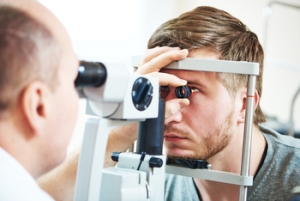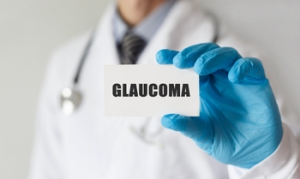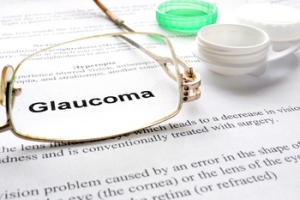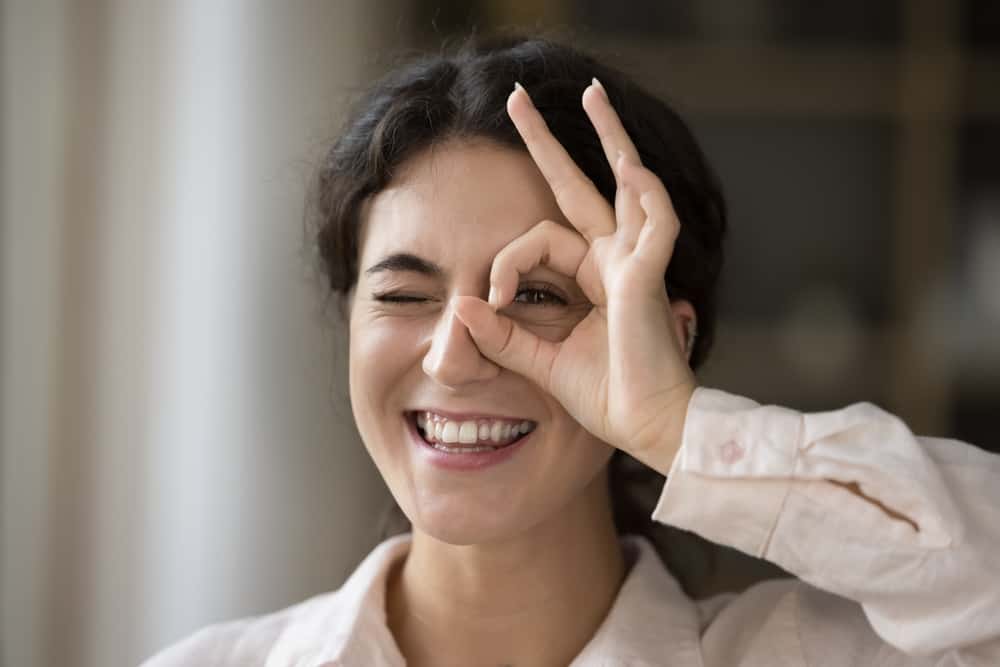Understanding Acute Angle Closure Glaucoma: Symptoms, Treatment, and Prevention
Glaucoma is a group of eye conditions that can cause blindness by damaging the optic nerve, usually due to high eye pressure. Among its types, acute angle closure glaucoma stands out for its rapid onset and the immediate need for medical intervention it demands. This post delves into the specifics of acute angle closure glaucoma, exploring its symptoms, causes, treatment options, and preventative measures. With a focus on educating and providing actionable insights, we aim to arm you with the knowledge necessary to identify and address this condition effectively.
What is Acute Angle Closure Glaucoma?
Acute angle closure glaucoma is a severe form of glaucoma characterised by a sudden increase in intraocular pressure (IOP) when the drainage angle of the eye (formed by the cornea and the iris) becomes completely blocked. Unlike primary open-angle glaucoma, which progresses slowly, acute angle closure can occur suddenly, leading to rapid vision loss if not treated immediately.
Types of Angle Closure Glaucoma

Primary Angle Closure Glaucoma (PACG)
Primary Angle Closure Glaucoma occurs independently of any other eye disease. The primary mechanism behind PACG is related to the eye’s anatomical features, such as a narrow anterior chamber angle, which predisposes the eye to fluid blockage and pressure build-up. Patients with PACG may not always experience symptoms until the condition progresses to an acute stage, making regular eye examinations vital for early detection.
Secondary Angle Closure Glaucoma
Secondary Angle Closure Glaucoma arises as a complication of other eye conditions or diseases, such as cataracts, eye tumours, or uveitis. These conditions can lead to changes in the eye that result in the blockage of the drainage angle. Treatment of secondary angle closure glaucoma often involves addressing the underlying condition as well as the glaucoma itself.
Acute Angle Closure Glaucoma
This type represents a sudden, severe blockage of fluid in the eye, leading to a rapid increase in intraocular pressure. Symptoms are typically very noticeable and include intense eye pain, blurred vision, headache, nausea, and vomiting. Acute angle closure glaucoma constitutes a medical emergency necessitating prompt intervention to avert permanent vision impairment.
Chronic Angle Closure Glaucoma
Chronic Angle Closure Glaucoma develops more slowly and can be more difficult to detect early on. It may gradually damage the optic nerve without clear symptoms, similar to primary open-angle glaucoma. However, it’s caused by a gradual closure of the drainage angle, which differs from the open-angle form. Patients with chronic angle closure glaucoma need ongoing treatment to manage intraocular pressure.
Risk Factors
The risk factors for angle closure glaucoma are a complex interplay of genetic, anatomical, and environmental factors. Comprehending these risk factors is vital for pinpointing individuals at elevated risk and enacting preventive measures. Here, we delve into the risk factors associated with angle closure glaucoma, emphasising the importance of awareness and early detection.
Age
Age is a significant risk factor, with angle closure glaucoma more commonly diagnosed in individuals over the age of 40. The risk increases with advancing age due to the natural changes in the eye’s anatomy and the lens’s gradual increase in size, which can lead to a more narrow anterior chamber angle.
Ethnicity
Some ethnicities face an increased risk of developing angle closure glaucoma. People of Asian descent, particularly East Asian and South Asian populations, have a higher prevalence of angle-closure glaucoma compared to those of European or African descent. Inuit populations also have a higher risk, attributed to anatomical differences in eye structure.
Gender
Women are more likely to develop angle-closure glaucoma than men. This difference may be due to the anatomical variations in the eye, with women generally having shallower anterior chambers than men, increasing the risk of angle closure.
Family History
A hereditary predisposition to glaucoma heightens the likelihood of its onset. This is particularly true for angle closure glaucoma, where genetic predispositions can influence the anatomical features of the eye that predispose individuals to this type of glaucoma.
Refractive Errors
Hyperopia, or farsightedness, is a known risk factor for angle closure glaucoma. Hyperopic eyes tend to be shorter and have shallower anterior chambers, making the angle between the iris and the cornea narrower and more prone to blockage.
Anatomical Factors
Individuals with certain anatomical features are at an increased risk of angle closure glaucoma. These features include a shallow anterior chamber, a narrow-angle between the iris and the cornea, a thicker or more anteriorly positioned lens, and a shorter axial length of the eye. These anatomical conditions can lead to a higher likelihood of the drainage angle becoming blocked.
Lens Opacity
The development of lens opacity, such as cataracts, can increase the risk of secondary angle closure glaucoma by pushing the iris forward and narrowing the drainage angle.
Pupillary Block
Pupillary block is a condition that occurs when the movement of aqueous humour from the back to the front chamber of the eye is blocked, resulting in heightened pressure behind the iris. This can cause the iris to bulge forward, narrowing the drainage angle and increasing the risk of angle closure.
Recognising the symptoms of angle closure glaucoma and understanding the diagnostic process are key steps in the management and treatment of this condition. Prompt identification and treatment are vital to avert irreparable harm to the optic nerve and potential loss of vision.
Symptoms of Angle Closure Glaucoma

Angle-closure glaucoma can manifest as either an acute attack or a chronic condition, each with distinct symptoms.
Acute Angle Closure Glaucoma Symptoms
An acute attack of angle closure glaucoma is a medical emergency characterised by a sudden onset of symptoms, including:
- Severe Eye Pain: Often described as intense, painful pressure within the eye.
- Blurred Vision: Sudden decrease in visual clarity, which may be accompanied by halos around lights.
- Headache: A severe headache that often accompanies the eye pain.
- Nausea and Vomiting: Due to the severe pain and increase in intraocular pressure.
- Eye Redness: The eye may appear red and inflamed.
- Sudden Vision Loss: In severe cases, rapid vision loss can occur if the condition is not treated promptly.
Chronic Angle Closure Glaucoma Symptoms
Chronic angle closure glaucoma tends to progress more slowly and may not present immediate symptoms. When symptoms do occur, they can include:
- Gradual Loss of Peripheral Vision: Often unnoticed until significant vision loss has occurred.
- Mild Eye Discomfort: Less intense than in acute cases.
- Slight Blurring of Vision: This may occur intermittently.
Diagnosis of Angle Closure Glaucoma
The diagnosis of angle closure glaucoma involves a comprehensive eye examination and several specific tests to assess the structure and function of the eye, including:
Ophthalmoscopy
This examination enables the ophthalmologist to assess the optic nerve for indications of harm. A small device magnifies and illuminates the back of the eye, providing a clear view of the optic nerve head.
Tonometry
Tonometry measures the intraocular pressure (IOP) within the eye. Elevated IOP is a key indicator of glaucoma. Various methods can be used, including application tonometry, which involves applying a small amount of pressure to the eye through a pressure-sensitive tip.
Gonioscopy
Gonioscopy is crucial for evaluating the eye’s drainage angle. By using a special contact lens with a mirror, eye specialists can determine the angle between the iris and cornea, indicating whether it is open or closed.
Imaging Tests
Sophisticated imaging examinations like optical coherence tomography (OCT) and anterior segment OCT offer precise visualisations of the eye’s structures. These tests are particularly useful for examining the angle of the eye and the thickness of the nerve fibre layer around the optic nerve.
Visual Field Test
This test evaluates the peripheral vision and can help identify any areas of vision loss. Patients are asked to respond to visual stimuli presented in their peripheral vision, helping to map out any deficits.
Importance of Early Detection
Early detection of angle closure glaucoma is crucial for preventing irreversible vision loss. Individuals at higher risk should undergo regular eye examinations, including those with a family history of glaucoma, those over 40 years of age, and those belonging to high-risk ethnic groups. Recognising the symptoms and undergoing timely diagnostic testing can lead to effective management and treatment, preserving vision and quality of life.
Effective management of angle closure glaucoma is critical to prevent optic nerve damage and preserve vision. The strategies for managing this condition vary based on its severity, whether it’s an acute attack or a chronic condition, and individual patient factors. Here, we explore the various management approaches, including medical treatment, laser therapy, and surgical interventions, to address angle closure glaucoma.
Immediate Management of Acute Angle Closure Glaucoma
An acute angle closure attack is a medical emergency requiring prompt treatment to lower intraocular pressure (IOP) and prevent permanent vision loss.
Medical Treatment
Initially, medication is administered to rapidly decrease IOP. These may include:
- Oral or Intravenous Hyperosmotic Agents: These agents help to lower IOP quickly by drawing fluid out of the eye.
- Topical Beta-Blockers, Alpha Agonists, and Prostaglandin Analogues: These eye drops reduce IOP by either decreasing aqueous humour production or increasing its outflow.
- Acetazolamide: An oral carbonic anhydrase inhibitor that reduces the production of aqueous humour, thus lowering IOP.
Laser Peripheral Iridotomy (LPI)
Following initial medical management, LPI is often performed. This laser procedure creates a small hole in the peripheral iris, allowing aqueous humour to flow from the posterior to the anterior chamber, bypassing the block at the pupil. LPI can effectively prevent further acute attacks and is also used prophylactically in the fellow eye, which is at high risk of angle closure.
Management of Chronic Angle Closure Glaucoma

Chronic angle-closure glaucoma requires ongoing treatment to control IOP and prevent optic nerve damage.
Laser and Surgical Procedures
- Laser Iridotomy: As with acute cases, laser iridotomy can be effective in preventing angle closure by creating an alternative pathway for aqueous humour drainage.
- Laser Trabeculoplasty: This procedure targets the trabecular meshwork to increase aqueous humour outflow, effectively lowering IOP in some chronic cases.
- Cataract Surgery: Removing a lens that is contributing to angle closure can deepen the anterior chamber and open the angle. This is often combined with intraocular lens implantation.
- Goniosynechialysis: In cases where peripheral anterior synechiae have developed, this surgical procedure can be performed to separate the iris from the trabecular meshwork, improving aqueous humour outflow.
Medication
Ongoing medication may be necessary to control IOP in chronic conditions. The choice of medication is similar to those used in acute management but tailored to long-term control and patient tolerability.
Monitoring and Lifestyle Modifications
Regular follow-up appointments are crucial for monitoring treatment effectiveness and making any necessary adjustments. These appointments usually involve measuring IOP, evaluating the optic nerve, and conducting visual field tests.
Lifestyle adjustments can also be impactful in glaucoma management. Patients are commonly counselled to steer clear of activities that could notably raise IOP, like strenuous lifting or inverted yoga poses. Promoting a healthy lifestyle through consistent exercise and a well-rounded diet can enhance overall eye health.
Prevention Strategies
Prevention plays a crucial role in managing angle closure glaucoma, aiming to reduce the risk of developing the condition or preventing its progression to more severe stages. While not all cases of angle closure glaucoma can be prevented due to its link with anatomical factors and genetics, there are strategies that can help mitigate risk and identify the condition early when treatment is most effective.
Regular Eye Examinations
The cornerstone of prevention is regular, comprehensive eye examinations. These exams allow eye care professionals to detect signs of glaucoma, such as increased intraocular pressure (IOP) and changes in the optic nerve before symptoms become apparent. For individuals at higher risk of angle closure glaucoma, such as those over 40, with a family history of glaucoma, of Asian or Inuit descent, or who are farsighted, more frequent eye exams are recommended.
Awareness of Risk Factors and Symptoms
Being aware of the risk factors and recognising the early symptoms of an acute angle closure attack, such as sudden eye pain, headache, blurred vision, and seeing halos around lights, can lead to quicker treatment and potentially save vision. Education on the importance of seeking immediate medical attention if these symptoms occur cannot be overstated.
Prophylactic Laser Peripheral Iridotomy (LPI)
For individuals identified as being at high risk for angle closure, such as those with narrow angles detected during an eye examination, prophylactic LPI may be recommended. By creating a small hole in the iris, LPI provides an alternative pathway for aqueous humour to flow, reducing the risk of angle closure. This preventive measure has been shown to significantly decrease the chance of an acute angle closure event.
Living with Angle Closure Glaucoma

Living with angle closure glaucoma involves navigating both the physical implications of the condition and its emotional and social impacts. While the prospect of managing a chronic eye condition can be daunting, advancements in treatment and support resources make it possible for individuals with angle closure glaucoma to lead full and active lives. Understanding the condition, staying proactive about treatment, and accessing support are key components of adapting to life with glaucoma.
Daily Management and Treatment Adherence
Effective management of angle-closure glaucoma requires a commitment to daily treatment regimens, regular medical appointments, and monitoring of intraocular pressure (IOP). Adherence to prescribed treatments, whether eye drops, oral medications, or both, is crucial for controlling IOP and preventing vision loss. Patients may benefit from establishing daily routines and tactics, like setting alarms or utilising pill organisers, to maintain regularity in taking their medication.
Regular Monitoring and Eye Exams
Regular follow-up appointments with an ophthalmologist are essential for monitoring the progression of glaucoma and adjusting treatment plans as needed. These appointments often include measuring IOP, checking the optic nerve, and performing visual field tests. Staying vigilant about these appointments helps catch any changes early and allows for timely interventions.
Coping with Vision Changes
Individuals with angle closure glaucoma may experience changes in their vision, including difficulties with peripheral vision or adapting to low light. Adapting to these changes may involve using assistive devices, such as magnifiers or special lighting, to aid in daily tasks. Rehabilitation services and low vision aids can also be invaluable resources for maintaining independence and quality of life.
Emotional and Psychological Impact
Receiving a diagnosis of angle closure glaucoma and dealing with the potential for vision loss can be emotionally challenging. It is common for people to encounter emotions like anxiety, depression, or fear. Reaching out to mental health experts, support networks, or virtual communities can offer solace and valuable guidance in handling these challenges. Sharing personal stories and coping mechanisms with empathetic individuals can provide a profound sense of reassurance.
Lifestyle Modifications and Self-Care
Making certain lifestyle adjustments can support overall eye health and well-being. Regular exercise, maintaining a healthy diet, and avoiding activities that can significantly increase IOP, such as heavy lifting or inverted yoga positions, are recommended. It’s also important to focus on overall wellness, including stress management techniques like meditation, yoga, or deep breathing exercises, which can help mitigate the stress associated with chronic illness management.
Conclusion
In conclusion, while acute angle closure glaucoma poses a significant threat to vision, understanding its symptoms, risk factors, and treatment options can empower individuals to seek prompt and effective care. Regular eye check-ups, particularly for individuals at increased risk, are vital for early identification and prevention. Through education and awareness, we can mitigate the impact of this potentially devastating condition and preserve vision for many.
Contact us today at (03) 9070 3580 to schedule an eye exam and take the first step towards protecting your vision. Together, we can work towards a brighter and clearer future for your eyes. So don’t wait; prioritise your eye health and take control of your vision today!
Note: Any surgical or invasive procedure carries risks. Before proceeding, you should seek a second opinion from an appropriately qualified health practitioner.
References
- https://www.healthline.com/health/closed-angle-glaucoma
- https://emedicine.medscape.com/article/1206956-overview?form=fpf






Leave a Reply
Want to join the discussion?Feel free to contribute!